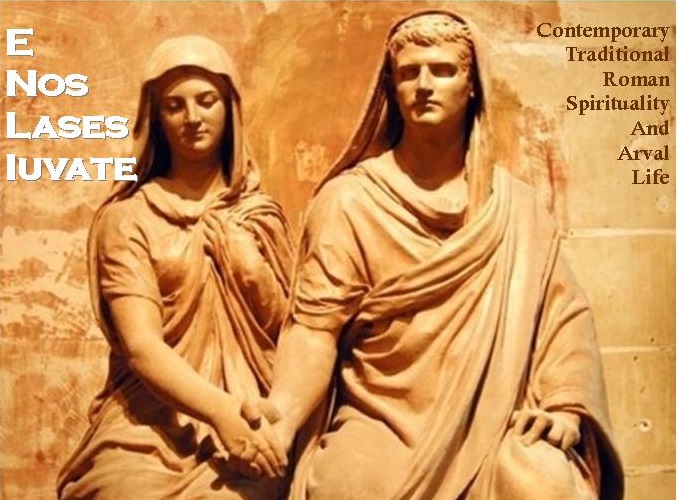December 25th is dedicated to "Sol Invictus" (Invincible Sun) celebrating the perpetual light's vitality.
This is a particularly old festivity already known and celebrated by ancient egyptians: divine energy "Earth's Heart" or "Intelligent Light" flows into a sacred cone shaped stone (Betilus - Gods' See) or in black stones or flash stones.
Sol Invictus was a special protector of the Emperor and the entire Roman Empire.
In this day an omnipotent, eternal and universal single sole God is celebrated whose most splendid manifestation is the Sun. This Great One has the Substance which Gods are formed of.
For this reason, christianity took possession of this ancient pagan festivity making it coincide with Christmas and the Jesus' birth.
This is a particularly old festivity already known and celebrated by ancient egyptians: divine energy "Earth's Heart" or "Intelligent Light" flows into a sacred cone shaped stone (Betilus - Gods' See) or in black stones or flash stones.
Sol Invictus was a special protector of the Emperor and the entire Roman Empire.
In this day an omnipotent, eternal and universal single sole God is celebrated whose most splendid manifestation is the Sun. This Great One has the Substance which Gods are formed of.
For this reason, christianity took possession of this ancient pagan festivity making it coincide with Christmas and the Jesus' birth.
It is important to note that the concept of Sun celebrated in this day is not referred to the Sun as "astronomical object", or the star everyone can see in
the sky - the sole sun the profane people can perceive, but as "divine
entity", but the so-called "Third Sun", "The Centre of the Universe, "The Divine Entity". I suggest for any further detail the reading of the text by the Emperor Julian "Hymn To King Helios". This well-known hymn by Proclus can be used as correct invocation.
Proclus; Hymn to Helios
Hearken, king of noeric fire, Titan holding the golden bridle,
hearken, dispenser of light, you, o Lord, who hold yourself the key to
the life-supporting source
and channel off from above a rich stream of harmony into the material
worlds.
Hearken: for you, being above the middlemost seat
of aether
and in possession of the very brilliant disk,
the heart of the cosmos, have filled everything
with your intellect-awakening providence.
The planets, girded with your ever-blooming torches,
through unceasing and untiring dances
always send life-producing drops down for earthlings.
Under the influence of your chariot’s returning courses
everything that is born has sprouted up according to the ordinance of
the Seasons.
The din of the elements clashing with each other
stopped once you appeared from your unspeakable begetter.
For you the unshakeable choir of the Moirai has yielded.
Back again they wind the thread of compelling destiny,
when you wish it.
For all around you dominate, all around you rule by force.
From your chain the king of the song that obeys
the divine, Phoibos,
sprung forth.
Singing inspired songs to the accompaniment of the kithara
he calms the great wave of deep-roaring becoming.
From your evil-averting band that imparts pleasant gifts Paiêon
sprouted,
and he imposed his health by filling the wide cosmos with harmony wholly
devoid of harm.
People honour you in hymns as the famous father of Dionysus.
And again some praise you in songs as Euios Attis in the extreme depths
of matter,
whereas others praise you as pretty Adonis.
The threat of your swift whip holds fears for the wild-tempered daemons,
noxious to men,
who prepare evil for our miserable souls,
in order that forever, in the gulf of heavy-resounding life,
they suffer once they have fallen under the yoke
of the body
with the result that they forget the bright-shining court of the lofty
Father.
But, you the best of gods, crowned with fire, blest daemon,
image of the all-creating god, uplifter of souls,
hearken and always purify me of every fault;
receive my tearful supplication,
pull me out of baneful defilement and keep me far from the punishing
deities
while mollifying the swift eye of Justice that sees all.
May you always through your evil-averting help
give holy light rich with blessings to my soul,
once you have scattered the man-destroying poisonous mist,
and to my body fitness and gift-bestowing health;
bring me to glory, that in accord with the traditions of my fore fathers
I may cultivate the gifts of the Muses with pretty locks.
Give me, if you wish so, Lord, unshakeable bliss as a reward for lovely
piety.
You perfect all things easily, for you have the power and infinite
might.
And if some ill comes my way through the threads moved by the stars
from the spindles of destiny that revolve in helices,
ward it off yourself with your mighty radiance.








